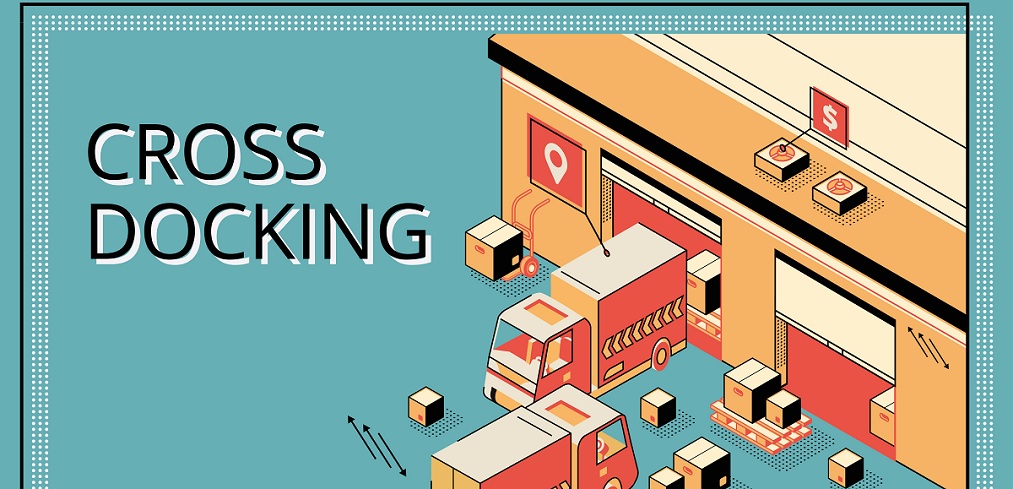Cross-docking is a logistics strategy for unloading products and materials immediately from inbound delivery vehicles and loading them directly onto outbound vehicles. By minimizing space requirements, warehouse storage costs and inventory handling, cross-docking can streamline supply chains and help them move goods to market in a productive, effective manner.
A cross dock distribution centre has multiple doors, or “docks,” for loading and unloading trucks. Large distribution centres may have hundreds of docks. Cartons from suppliers arrive at these docks on one side of the distribution building, where they are batched for outgoing truck loads with other cartons, they are then loaded onto outgoing trucks from docks on the other side of the building.
How a shipment from a supplier to a retailer is moved through the cross docking process:
- The supplier ships products to their destinations
- The supplier’s products are unloaded on an in-coming dock and onto a sophisticated system of conveyor belts
- The products are sorted, based on final store destination
- The sorted products are moved across the distribution centre building and grouped by final store destination with products from other suppliers
- Truck-size lots of products are directed to an outgoing loading dock area
- The truck-size lots are loaded onto an out-going truck bound for a specific destination store.
WHAT ARE THE BENEFITS OF CROSS DOCKING?
The supplier benefits directly from cross docking by getting product into stores faster and indirectly by lowering costs for the retailer which helps reduce the final price for the end consumer and consequently increases the number of units sold.
- Reduction in your facility costs by consolidating smaller shipping systems into one cohesive operation.
- Inventory is held for shorter periods, reducing inventory carrying costs
- Reduction in the need for warehouse space because product is not stored
- Fewer but larger shipments are sent to stores, saving on transportation costs
EDI and Cross Docking
Efficient cross docking requires EDI Purchase Orders (EDI 850) and Advance Ship Notices (ASN’s) as well as bar code labelling for cartons.
Electronic Advance Ship Notice (ASN) Transmission:
ASN’s sent via EDI provide real-time data on inbound and outbound goods. ASN’s from suppliers support distribution centre visibility for inbound shipments and supports planning of receiving staff, allocation of receiving docks, and arrangement for out-bound trailers.
Barcode Scanning:
ASN’s in conjunction with UCC Bar code labels reduce manual data entry and increases inventory accuracy rates by seamlessly integrating information from computers, UPC barcode scanners, etc. The ASN’s and UCC carton labels will be used again by the receiving dock at the final destination store.
Contact us anytime to find out more about how we can assist your small business.
Please chat with one of our experts here online or call us @888-339-0722 to discuss your EDI specific requirements.




